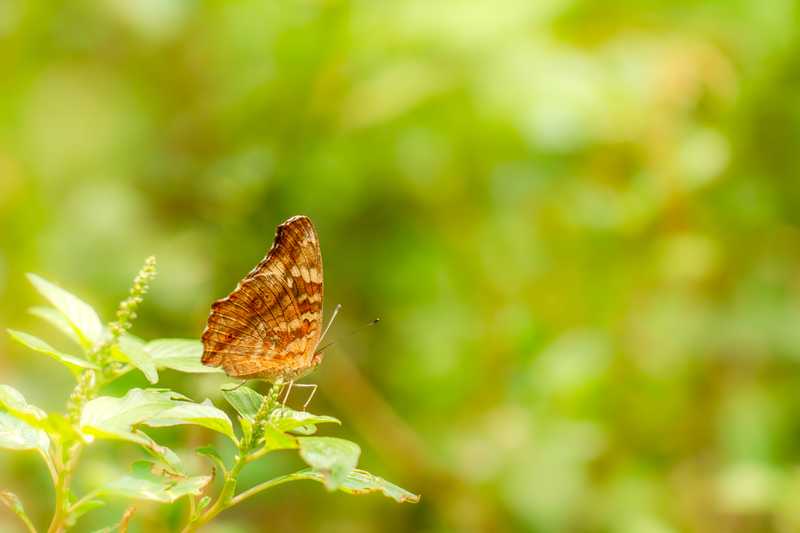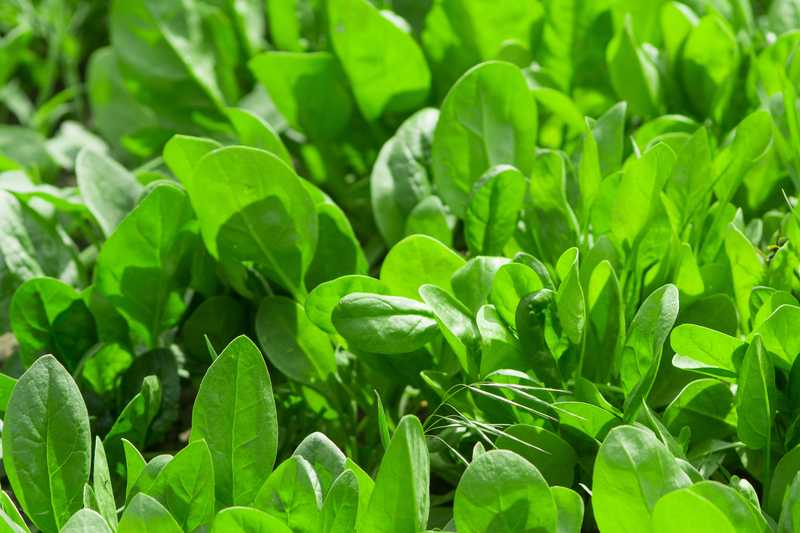
Spinach is one of the fastest-growing leafy vegetables and it’s one of the easiest vegetables to grow in home gardens. It is extremely easy to maintain and is loaded with nutrients, which is why it has become a popular crop to plant, grow, and cook.
The plant also grows flowers, and since it’s common to consume the leaves, many people wonder if the spinach flowers are edible or not.
Discussing Whether or Not Spinach Flowers Are Edible
To begin with, the spinach plant should not grow flower stalks and the users must take preventive measures to avoid flowering. This is because when leafy greens like spinach develop flowers, the flavor of the leaves is sucked away, which results in a bitter flavor in the leaves.
As a result, you won’t be able to use the spinach plant at all. However, flowering is recommended if you need to get seeds.
As far as the edibility is concerned, the flowers are edible to some extent but it’s hard to comment on the palatability of the flowers. In simpler words, the spinach flowers are safe to consume but you have to consider the flavor.
The spinach flowers have a weird and slimy texture, which is why it’s best that you don’t cook them.
However, these flowers are extremely vibrant, which is why they can be used as a garnish for curries and salads. In addition, you can use a plastic bag to store the flowers in the refrigerator if you’ve to do the garnishing later (they will remain fresh for over one week).
Reason Behind Flowering
The spinach starts flowering when the temperature is higher because this is a cool-season plant and prefers temperatures between 5 degrees Celsius and 23 degrees Celsius.
However, if you plant multiple spinach plants too close to each other, it can stimulate flowering but the absence or shortage of nutrients in the soil can also cause this issue. Flowering is actually a part of spinach’s lifecycle but early flowering is a serious concern.
Bolting is the perfect term to discuss early flowering because it’s the process with which this leafy vegetable passes through the end of its lifecycle.
It’s defined as the point where spinach feels it has consumed all the nutrients from the garden and decides to die to create space for the next growing season. Bolting can happen pretty quickly, sometimes within a few days.
When bolting starts, the spinach leaves start turning angular (they are normally oval and rounded). In addition, the spinach leaves become bitter and inedible.
Also, the plant starts sending the central stalk that grows small flower buds in the form of clusters. These flower blooms produce the seeds before the spinach plant starts withering and dies – the seeds can be used to grow new spinach.
The early bolting happens when the temperature increases more than 23 degrees Celsius. Secondly, the plant starts to bolt when it feels like it cannot be productive due to the absence of nutrients in the soil or when the plants are packed too close to each other.
Signs Of Bolting
To prevent early flowering and bolting in spinach plants, it’s important to understand the signs of bolting, which usually include;
- Changed Shape Of Leaves
The healthy plant has more oval-shaped leaves, similar to the rounded and well-shaped leaves you expect from grocery stores. However, when the plant starts seeding, the leaf shape changes and looks like an arrowhead. So, the angular shape of the leaves is the first sign that the plant’s lifecycle is coming to an end.
- Transformation In Plant’s Main Stalk
Usually, the main stalk of the spinach plant is narrow in terms of circumference. However, when bolting starts, the main stalk becomes thicker (it runs in the center of the spinach plant).
- Height Increase
The bolting spinach plants tend to grow taller as compared to the normal plant. Usually, the normal or healthy plant grows to over 18 inches at most. However, when bolting happens, the plant can grow over 2ft. In particular, the spinach plant grows vertically rather than horizontally during the bolting process.
- Development Of Florets
The leaves on the top of the bolting spinach plant tend to become tighter, smaller, and angular, which starts looking like florets. In addition, the flowers start developing along the stem or stalk. Usually, these flowers start drying out and produce seeds, which can be used to grow new spinach plants.
Ways To Prevent Bolting
Spinach is extremely easy to grow and following a few prevention measures can help you prevent early flowering. First of all, you need to grow the spinach plant when you have a minimum of eight to twelve weeks when the temperature will remain below 75 degrees Fahrenheit.
In case the temperature exceeds 80 degrees Fahrenheit, you must put the plant in the afternoon shade.
Secondly, it is recommended that you water the spinach a bit every day or alternate day to ensure the soil is moist but isn’t soaking of water. This is because when you deep water the plants after one week, the water will sit in the pot, which damages the leaves.
In addition, the spinach plant has short roots and cannot go deep into the soil to get water.
It is important to add that bolting cannot be eliminated. However, the remaining time of the plant can be prolonged by harvesting the outer leaves of the plant frequently. All in all, the leaves can be consumed until they become rubbery or bitter.
What To Do When Bolting Happens?
There are two options that you can try once the bolting process starts. First of all, you could leave the plant as it is and let it seed. The true spinach plant seeds can regrow the spinach plant.
So, once the plant starts shedding the seeds, it’s recommended that you collect them for planting next season or you can leave them there for independent germination.
The second option is to pull the spinach from your garden and replace this plant with something new, preferably something that can grow in the current weather and garden conditions.
For this purpose, you should cut the spinach plant at the base rather than taking it out by the roots to make sure other plants aren’t disturbed. In addition, it will help compost the bolted spinach plant, so it can provide nutrients to other plants.
Thirdly, if you have to plant the cool-season spinach, you should plant it four to six weeks prior to the date of the first frost in the region. You can try planting the seeds in a cold frame during fall or use hay to cover the late-season plants.
The hay can be removed during spring, so you can have early spinach crops as well. As far as the flowers are concerned, it’s recommended that you pinch off the clusters of flower buds as it can help slow down the bolting process.
In simpler words, it’s best that you let the plant bolt. However, some varieties of spinach have a high tolerance against heat, such as spinner and correnta – these spinach varieties don’t bolt even if they are exposed to long sunny days.
In addition, tyee is another spinach variety that has low bolting potential but its growth is also slow – the harvestable leaves will take around 42 days to develop fully.
The Bottom Line
The spinach flowers are edible and safe to consume as there are no health risks involved. However, there is not enough information available on the taste of the spinach flowers, which is why many people don’t recommend eating them.
Also, early flowering is not normal for spinach as it’s equivalent to bolting and preventive measures must be taken to avoid it. In case it’s not possible to stop the flowering anymore, let them grow and collect seeds to grow new spinach for the next season.



